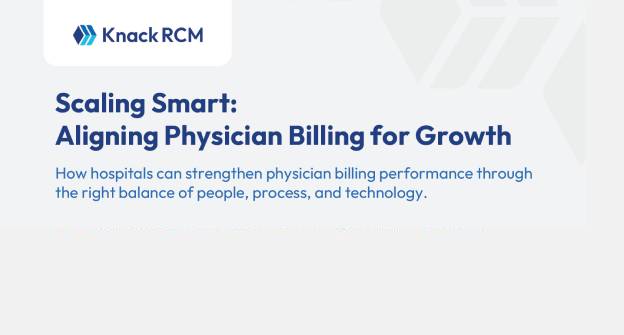How to Leverage RCM Into a Financial Strategy That Protects Your Dermatology Practice’s Future

Running a dermatology practice today requires more than clinical expertise—it demands strong financial management and operational foresight. Between cosmetic and medical services, payer complexities, and growing patient expectations, dermatology practices face unique revenue cycle challenges that directly impact profitability.
The good news? RCM can be more than a billing function—it can be a strategic driver that strengthens your practice’s financial foundation, enhances patient satisfaction, and positions you for long-term growth.
1.Dermatology RCM is complex—and full of hidden opportunity
Unlike many other specialties, dermatology spans both insurance-reimbursed and elective procedures. That mix can make claims management and collections especially difficult:
- Coding errors and medical necessity denials are common for biopsies, excisions, and pathology services.
- Cosmetic services often fall outside insurance coverage, requiring upfront patient collections and strong communication.
- High patient volume and varied payer rules increase the administrative burden on front-office teams.
A well-structured RCM strategy can uncover hidden revenue by improving charge capture, optimizing payer contracts, and ensuring eligibility and benefits are verified before services are performed.
2. Good data informs financial strategy
Your revenue data is your best tool for strategic decision-making. By tracking denial trends, payer response times, and patient payment behavior, dermatology practices can identify:
- Where revenue leakage is occurring
- Which payers or procedures are driving the most denials
- How cosmetic vs. medical revenue impacts overall cash flow
At Knack RCM, we help dermatology practices turn that data into insight that can guide smarter scheduling, staffing, and service mix decisions.
3. Automation and expertise protect your margins
Manual billing processes can’t keep pace with today’s administrative demands. From prior authorizations to eligibility checks and claim scrubbing, automation can help eliminate repetitive tasks and reduce human error.
But technology alone isn’t enough. You need a partner that combines automation with specialty-trained billing experts who understand dermatology’s unique codes, modifiers, and payer rules. That’s how you minimize denials, speed up reimbursement, and keep cash flow predictable—even as payer policies shift.
4. Patient experience and financial performance go hand in hand
Dermatology patients often interact with your practice for both elective and medical reasons. A disjointed billing process can lead to confusion, delayed payments, and poor patient satisfaction.
An effective RCM strategy ensures clear communication, accurate estimates, and flexible payment options. This builds trust, encourages patient loyalty and improves collections.
5. The right RCM partner extends your team—not replaces it
Outsourcing RCM doesn’t mean losing control. It means gaining a partner who aligns with your goals, integrates seamlessly with your systems, and provides real-time transparency.
At Knack RCM, we work as an extension of your dermatology practice—bringing the people, process, and technology to streamline workflows, improve financial performance, and free your team to focus on patient care.
The Bottom Line
RCM is the financial engine behind a thriving dermatology practice. Protect margins and reduce administrative strain by taking a strategic approach that combines automation, data visibility, and specialty expertise.
Recent Posts

Scaling Smart: Aligning Physician Billing for Growth
Read More
Scaling Without Breaking: How to Strengthen Physician Billing as Your Network Grows
Read More
From Overhead to Opportunity: Structuring RCM Teams for Hospital-Owned Success
Read More